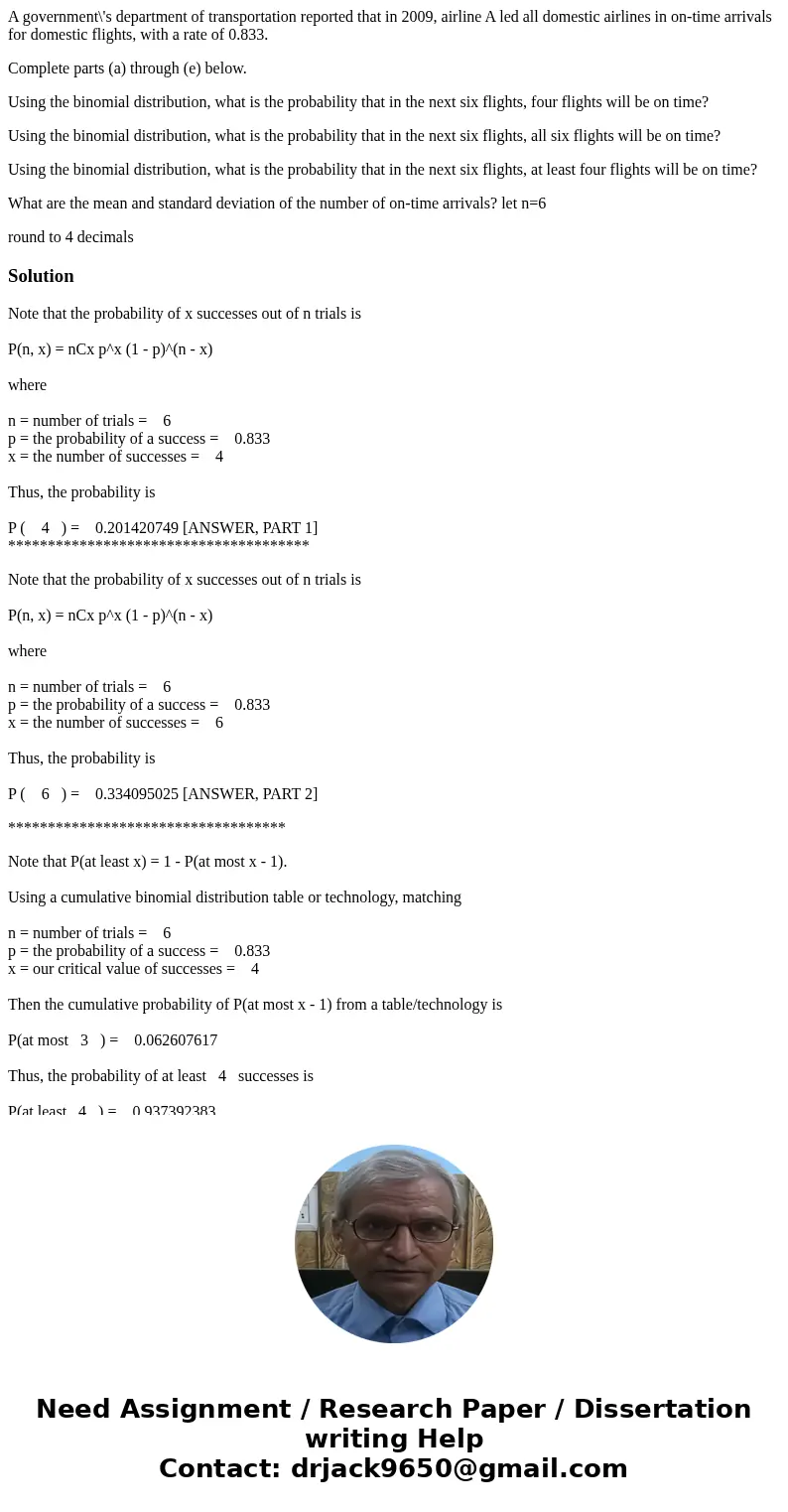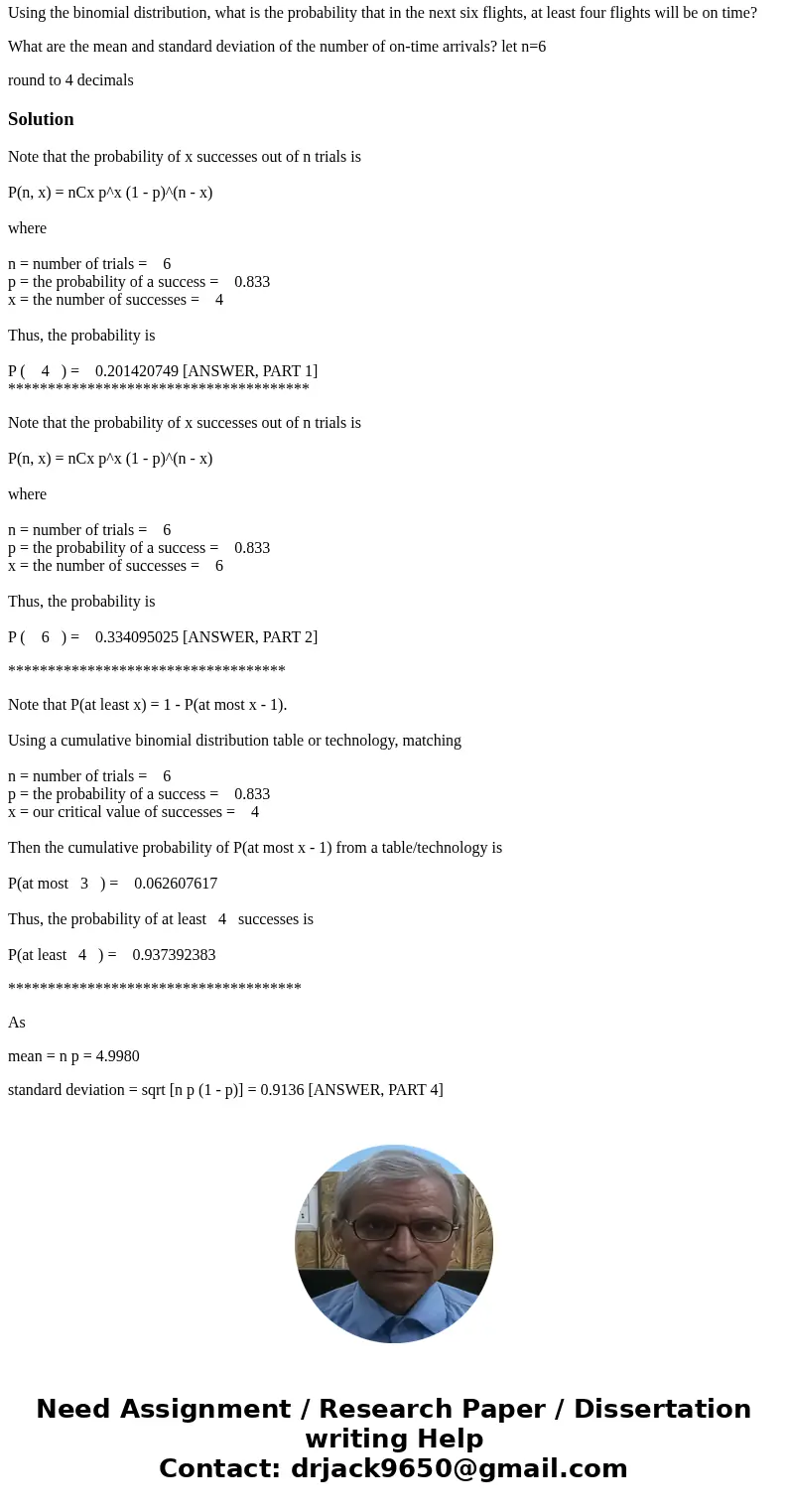A governments department of transportation reported that in
A government\'s department of transportation reported that in 2009, airline A led all domestic airlines in on-time arrivals for domestic flights, with a rate of 0.833.
Complete parts (a) through (e) below.
Using the binomial distribution, what is the probability that in the next six flights, four flights will be on time?
Using the binomial distribution, what is the probability that in the next six flights, all six flights will be on time?
Using the binomial distribution, what is the probability that in the next six flights, at least four flights will be on time?
What are the mean and standard deviation of the number of on-time arrivals? let n=6
round to 4 decimals
Solution
Note that the probability of x successes out of n trials is
P(n, x) = nCx p^x (1 - p)^(n - x)
where
n = number of trials = 6
p = the probability of a success = 0.833
x = the number of successes = 4
Thus, the probability is
P ( 4 ) = 0.201420749 [ANSWER, PART 1]
**************************************
Note that the probability of x successes out of n trials is
P(n, x) = nCx p^x (1 - p)^(n - x)
where
n = number of trials = 6
p = the probability of a success = 0.833
x = the number of successes = 6
Thus, the probability is
P ( 6 ) = 0.334095025 [ANSWER, PART 2]
***********************************
Note that P(at least x) = 1 - P(at most x - 1).
Using a cumulative binomial distribution table or technology, matching
n = number of trials = 6
p = the probability of a success = 0.833
x = our critical value of successes = 4
Then the cumulative probability of P(at most x - 1) from a table/technology is
P(at most 3 ) = 0.062607617
Thus, the probability of at least 4 successes is
P(at least 4 ) = 0.937392383
*************************************
As
mean = n p = 4.9980
standard deviation = sqrt [n p (1 - p)] = 0.9136 [ANSWER, PART 4]


 Homework Sourse
Homework Sourse